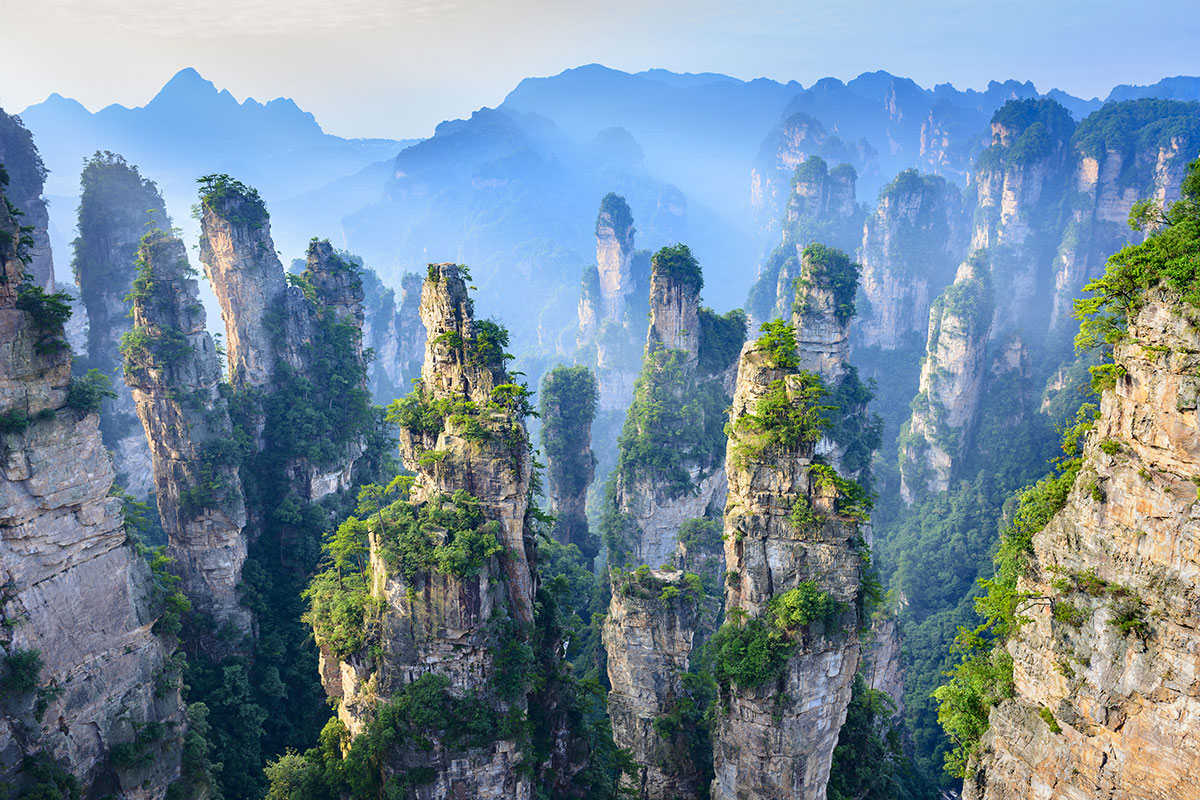
What are the Rocks in Zhangjiajie?
About Zhangjiajie National Forest Park
Zhangjiajie National Forest Park, located in the Hunan Province of China, is a UNESCO World Heritage Site renowned for its breathtaking natural beauty. The park is best known for its unique rock formations, known locally as “stone forests,” which are characterized by thousands of towering quartzite sandstone pillars that soar into the sky, creating a surreal landscape reminiscent of a mythical realm.
The Geology of Zhangjiajie's Rock Formations
The iconic rock pillars of Zhangjiajie are primarily composed of quartz sandstone, a type of sedimentary rock formed over millions of years.
Here's a breakdown of the key geological processes involved:
| Geological Process | Description | Role in Formation | |---|---|---| | Deposition | Layers of sand, derived from the weathering and erosion of pre-existing rocks, were deposited in a vast basin over millions of years. | Provided the raw material (sand) for the sandstone. | | Compaction and Cementation | Over time, the weight of overlying sediments compacted the sand grains. Dissolved minerals in groundwater precipitated between the grains, cementing them together to form solid rock. | Transformed loose sand into hard sandstone. | | Uplift and Exposure | Tectonic forces caused the uplift of the entire region, exposing the sandstone to weathering and erosion. | Brought the sandstone to the surface, setting the stage for its sculpting. | | Weathering and Erosion | The exposed sandstone was subjected to the relentless forces of weathering and erosion, primarily driven by water and wind. | Carved the sandstone into its distinctive pillar shapes. |
Here's how weathering and erosion shaped the pillars:
-
Water Erosion: Rainwater, slightly acidic due to dissolved carbon dioxide, seeped into cracks and fissures in the sandstone. Over time, this acidic water dissolved the cement holding the sand grains together, widening the cracks. The force of running water during heavy rains further eroded these weakened zones.
-
Freeze-Thaw Cycles: Water trapped in cracks expanded upon freezing, putting pressure on the surrounding rock. Repeated cycles of freezing and thawing gradually fractured the sandstone.
-
Wind Erosion: Wind carrying abrasive particles, like sand grains, bombarded the exposed rock surfaces, slowly wearing them down. This process is particularly effective in shaping the tops of the pillars.
The combination of these geological forces, acting over millions of years, has sculpted the awe-inspiring quartzite sandstone pillars that define the landscape of Zhangjiajie National Forest Park.
Characteristics of Quartz Sandstone
Quartz sandstone, the primary rock type in Zhangjiajie, possesses specific characteristics that contribute to the formation of the towering pillars:
- Durability: Quartz, the dominant mineral in this rock type, is highly resistant to weathering and erosion.
- Compaction: The sand grains in Zhangjiajie's sandstone are tightly compacted, making the rock strong and less susceptible to crumbling.
- Joint Patterns: The sandstone features vertical and horizontal cracks called joints. These joints provide pathways for water to penetrate, influencing the erosion patterns and contributing to the formation of the pillars.
FAQs
-
Q: How tall are the tallest rock pillars in Zhangjiajie?
- A: Some of the tallest pillars in Zhangjiajie reach heights of over 1,000 meters (3,280 feet).
-
Q: Are the rock formations in Zhangjiajie still changing?
- A: Yes, while the changes are incredibly slow, the forces of weathering and erosion are still actively shaping the landscape of Zhangjiajie.
-
Q: Is it safe to climb the rock formations in Zhangjiajie?
- A: Climbing on the rock formations is strictly prohibited in most areas of the park to protect both visitors and the natural environment. Designated hiking trails offer spectacular views of the pillars.